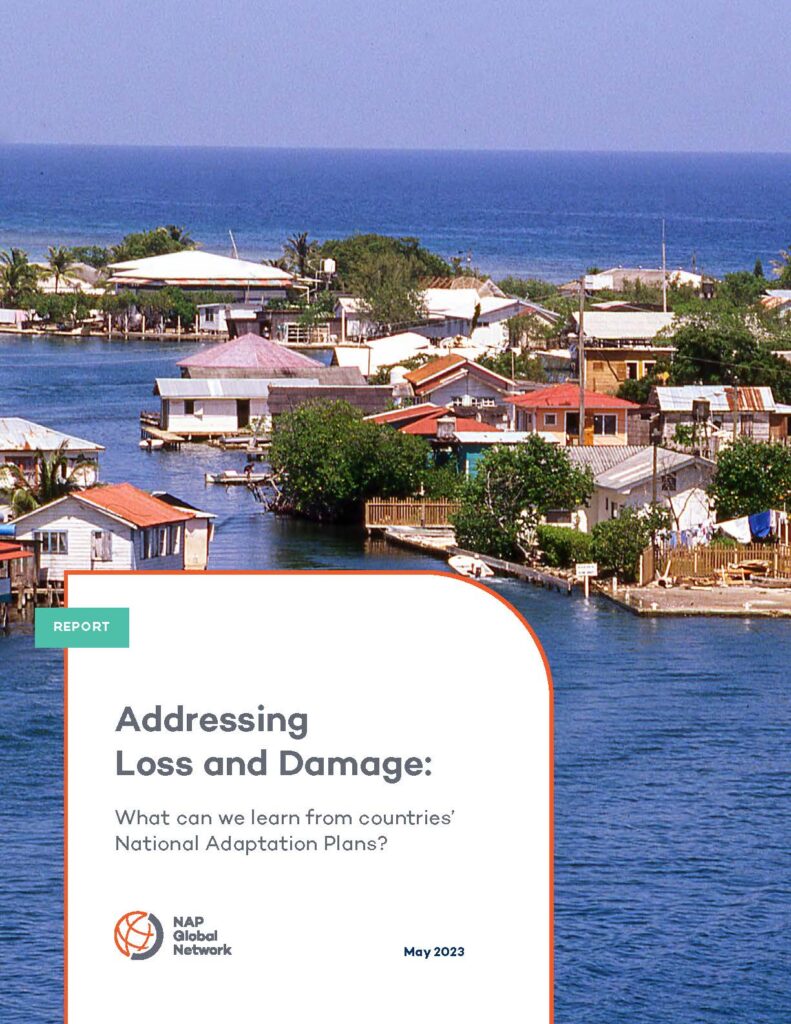
Addressing Loss and Damage: What can we learn from countries’ National Adaptation Plans?
“Loss and damage” refers to the observed impacts and projected risks of climate change that go beyond what countries, communities, or ecosystems can adapt to. Averting, minimizing, and addressing loss and damage is about protecting and strengthening the resilience of communities, livelihoods, and ecosystems in the face of climate change, ensuring they are safeguarded for future generations.
The National Adaptation Plan (NAP) process is fundamentally about minimizing loss and damage through adaptation action. NAP documents are relevant to conversations about loss and damage because they:
- Contain information and analysis that facilitates an understanding of country-specific losses and damages.
- Provide insights into countries’ understanding of the relationships between adaptation and disaster risk reduction and disaster risk management.
- Include concrete actions to minimize losses and damages.
Through a systematic review of NAP documents and interviews with key informants, this report showcases the role of NAP processes in minimizing and addressing loss and damage. It provides insights into how loss and damage information is presented in relation to adaptation efforts and how adaptation priorities identified in the NAPs have the potential to respond to loss and damage.
Related resources:
Publisher: International Institute for Sustainable Development